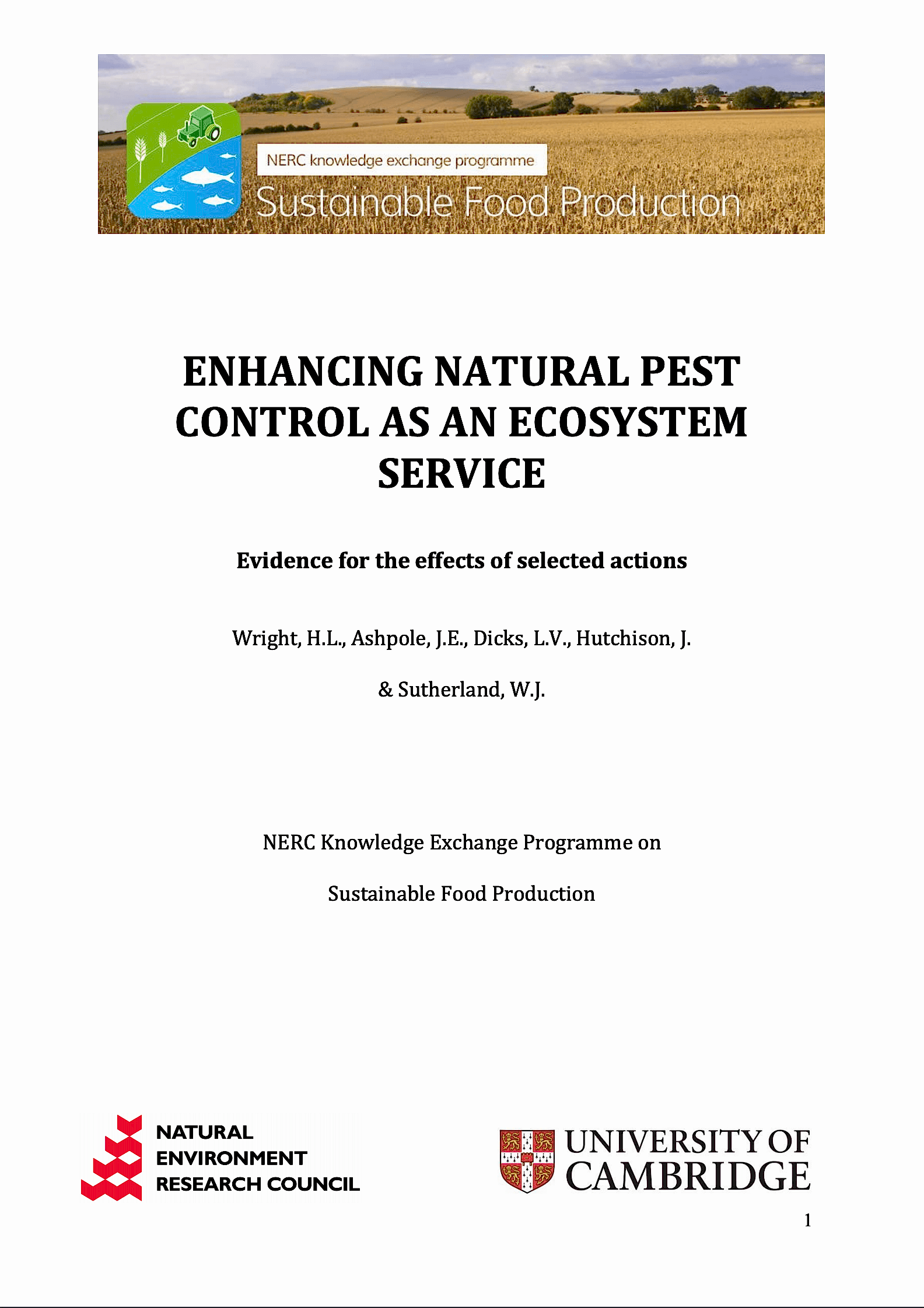Grow non-crop plants that produce chemicals that attract natural enemies
Overall effectiveness category Likely to be beneficial
Number of studies: 4
View assessment score
Hide assessment score
How is the evidence assessed?
Effectiveness
68%Certainty
40%Harms
0%
Study locations
Supporting evidence from individual studies
A controlled study in summer 2000 in Bonn, Germany (Sengonca et al. 2002) found that the abundance of four natural predators was significantly higher in lettuce Lactuca sativa plots intercropped with attractant plants (3.0-3.2 larvae and 3.2-3.6 adults per lettuce plant) than in monoculture lettuce plots (1.5 larvae and 1.7 adults). Egg and pupae abundance of the three ladybird species (Coccinellidae) and common green lacewing Chrysoperla carnea was similar between intercropped (12.5-13.0 eggs and 1.5-1.7 pupae per plant) and monoculture (11.5 eggs and 1 pupa) plots. Aphid (Aphidoidea) abundance was significantly lower in intercropped (110-125 per lettuce plant) than monoculture (160 per plant) plots. Natural predator and aphid numbers were similar between plots intercropped with wormwood Artemisia vulgaris, tansy Tanacetum vulgare or stinging nettle Urtica dioica. The attractant plants were tested separately in three blocks inside a 6 x 50 m field. Each attractant plant species was grown in nine plots of 1 x 0.3 m, placed in a 3 x 3 grid among 20 lettuce rows.
Study and other actions testedA replicated, randomised, controlled study in 1998–1999 in western Kenya (Gohole 2003) found that larval and pupal parasitism of four pest stem borer species (Crambidae, Noctuidae and Pyralidae) by four parasitoid wasp species (Hymenoptera) was similar in plots of sorghum Sorghum bicolor intercropped with molasses grass Melinis minutiflora (4.4% parasitism) and plots of sorghum monoculture (5.1% parasitism). Parasitism differed for only one of four seasons (in 1998), when pupal parasitism was higher in monoculture plots. The spotted borer Chilo partellus was less abundant in intercropped plots (2,750 individuals) than in monoculture plots (3,601). Intercropped plots contained one row of molasses grass for every three sorghum rows. Plots were 9 x 10 m with the treatment replicated in 11 blocks over three fields. Laboratory studies of odour choice found that volatiles from sorghum or maize Zea mays with molasses grass were not more attractive to the stem borer parasitoid sp. Cotesia sesamiae than maize or sorghum volatiles alone. The parasitoid Dentichasmias busseolae was repelled by molasses grass volatiles.
Study and other actions testedA controlled study in 2001-2003 in Guangzhou, China (Kong et al. 2005) found that more predatory mites Amblyseius newsami occurred in orange Citrus sinensis orchards with a tropical whiteweed Ageratum conyzoides ground cover (0.3 mites/orange tree leaf) than in control orchards (0.09 mites). The pest citrus red mite Panonychus citri was also less numerous in orchards containing tropical whiteweed (0.03 mites/leaf) than control orchards (0.18 mites). Odour choice tests in the laboratory found that Amblyseius newsami was strongly attracted to volatiles from fresh leaves (61% of choices versus a control) or essential oils (95% of choices) from tropical whiteweed. The study compared an orchard with a tropical whiteweed understorey grown for two years, and a control orchard with a groundcover of naturally growing weed species (but with tropical whiteweed removed). Mite counts took place in June 2003 using 15 randomly selected orange trees.
Study and other actions testedA replicated, randomised, controlled study in 2006-2007 in Karnataka, India (Hanumantharaya et al. 2008) found more natural predators, including lacewing (Neuroptera) eggs and ladybirds (Coccinellidae), in safflower Carthamus tinctorious intercropped with 7-13% coriander Coriandrum sativum (6.0-7.6 lacewing eggs and 1.0-1.4 ladybirds/plant) than in safflower monoculture (4.8 and 0.8, respectively). Cotton bollworm Helicoverpa armigera damage was lowest in intercropped plots of 13% and 10% coriander (16-17% of safflower capsules damaged) and greatest in safflower monoculture plots (21% damaged). Safflower yield was greater (0.92-1.1 t/ha) in intercropped plots (at all densities of coriander) than in monoculture plots (0.86 t/ha). The experiment comprised four treatments (safflower mixed with coriander at 5%, 7%, 10% and 13% of sowing seed volume) and a safflower monoculture control, replicated three times.
Study and other actions tested
Where has this evidence come from?
List of journals searched by synopsis
All the journals searched for all synopses
This Action forms part of the Action Synopsis:
Natural Pest Control
Natural Pest Control - Published 2013
Natural Pest Control Synopsis




















